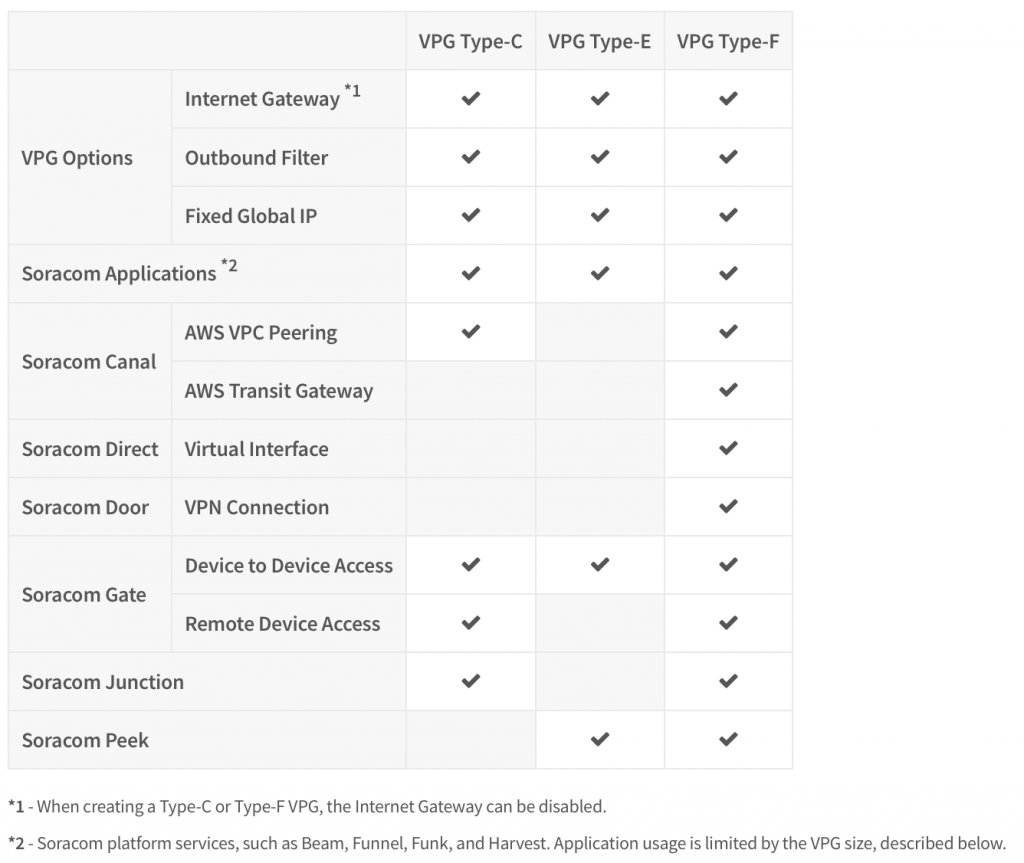VPG: The Next Generation

A New Generation of Virtual Gateway Services
It has been four and a half years since the introduction of our services Canal (VPG Type-C), and Direct (VPG Type-D) at SORACOM Connected 2016. Since then, we have taken customer feedback for various use cases to craft the next iteration of these services.
Now four years after releasing Type C/D, we are introducing their successors as VPG Type-E and VPG Type-F. Below is a brief description of VPG, followed by the exciting features of the new generation VPG.
What is a Virtual Private Gateway (VPG)?
The VPG is the primary component for configuring an independent mobile network for each customer application. Essentially, VPG allows each customer to have its own packet gateway device for configuring a mobile network.
Until now, when using services such as Canal, Gate, Direct, or Door, a customer would create a virtual private gateway then assign it to a group. Devices in the same group connect to the private network through which they use to communicate with the cloud (or with other devices in the same group using our Gate service).
For a more in-depth explanation of cellular virtual private gateways, please refer to our developer documentation: https://dev.soracom.io/jp/vpg/what-is-vpg/
The Next Generation
There are two new generations of virtual private gateway, VPG Type-E specialized for public internet connections and VPG Type-F capable of private closed network connections. The comparison table below summaries the differences between each type.
Improved Pricing
Possibly the most crucial reason for the new generation compared to the conventional VPG (Type-C/D) is the idea of “price merit”. For example, a customer using VPG Type-C for applications other than closed networks can switch to VPG Type-E to achieve the same essential functions for one-fifth of the cost. Likewise, a customer using VPG Type-D to connect to a closed network using a leased line or VPN could achieve the same functionality for one-sixth of the cost by moving to VPG Type-F.
New Features
This new generation of virtual private gateways also makes new features available, like local breakout (LBO) for faster roundtrip data transit and secure connection to AWS Transit Gateways.
Choosing the right VPG
The method of selecting the VPG Type depends on the use case. Simply put, consider selecting Type-E when not connecting to a closed network or Type-F when using a closed network.
(*) The following basic functions are available for applications that do not use a closed network connection.
- SORACOM Gate D2D (device-to-device communication)
- VPG outbound routing filter
- VPG static global IP address option
- Free usage of SORACOM Beam/Funnel/Funk service
- Free usage of custom DNS and CHAP authentication functions
VPG Migration
At present, all the functions used in the existing VPG Type-C/D can also be used in the new generation VPG, so please refer to the migration guide and consider migrating to VPG Type-E or F.





